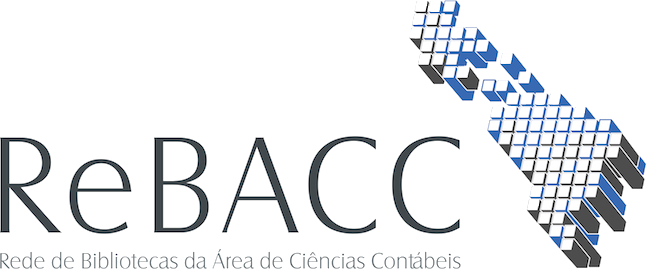Use este identificador para citar ou linkar para este item:
http://rebacc.crcrj.org.br/handle/123456789/1445| metadata.atena.dc.title: | Capital budgeting: a critical analysis of and suggestions for the use of weighted marginal cost of capital in investment decisions ORÇAMENTO DE CAPITAL: ANÁLISE CRÍTICA E SUGESTÕES PARA O USO DO CUSTO MARGINAL PONDERADO DE CAPITAL EM DECISÕES DE INVESTIMENTO |
| metadata.atena.dc.creator: | Marcio Araujo Resende José Ricardo Maia de Siqueira Rosilene Matos Domingues Jorge Candido de Almeida |
| metadata.atena.dc.subject: | Marginal Weighted Cost of Capital; Internal Rate of Return; Cost of Capita; Custo Marginal Ponderado de Capital; Taxa Interna de Retorno; Custo de Capital |
| metadata.atena.dc.date.issued: | 2014-11-12 |
| metadata.atena.dc.publisher: | REVISTA DE CONTABILIDADE DO MESTRADO EM CIÊNCIAS CONTÁBEIS DA UERJ |
| metadata.atena.dc.description: | In an environment of scarce funds, the Chief Finance Officers have to select the projects that will aggregate more value to the company, looking for an essencial goal: the maximization of the shareholders wealth. Many authors, mentioned in this paper, indicate the use of the marginal weighted cost of capital approach, which is based in the confrontation of the decreasing internal rates of return with the rising cost of capital of the company, to choose the better projects among some investiment alternatives. This focus is important, because it relates directly the return of the projects and the cost of capital. However, it can be verified, throughout the simulation presented in this paper, that the mentioned approach has somelimitations. The purpose of this work is to demonstrate that the marginal weighted cost of capital approach has to be used with caution, needing some adjustments, because the wrong interpretation of the results can lead to selection of projects that won’t increase the shareholders wealth in detriment of others that reach this goal. Keywords: Marginal Weighted Cost of Capital; Internal Rate of Return; Cost of Capita Em um ambiente de recursos escassos, os administradores financeiros têm a incumbência de selecionar projetos que representem a maior agregação de valor para a empresa, a fim de atingir um objetivo fundamental: a maximização de riqueza do acionista. Para a escolha dos projetos, vários autores, mencionados neste trabalho, apontam em direção à utilização da abordagem do custo marginal ponderado de capital (CMaPC), que se baseia no confronto das taxas internas de retorno decrescentes, de várias alternativas de investimento, com o custo de capital crescente da companhia. Este enfoque é importante, pois estabelece uma relação direta entre retorno dos projetos e custo de capital. Todavia, através da simulação desenvolvida neste trabalho, pode-se constatar que a referida abordagem apresenta algumas limitações, dentre elas a consideração da escala dos projetos. Este artigo tem como objetivo demonstrar que a abordagem do CMaPC deve ser usada com cautela, ensejando alguns ajustes, tendo em vista que a interpretação equivocada dos resultados auferidos pode levar à seleção de projetos, que não maximizem a riqueza dos acionistas, em detrimento de outros, que atinjam esta finalidade. Palavras-chaves: Custo Marginal Ponderado de Capital; Taxa Interna de Retorno; Custo de Capital ABSTRACT In an environment of scarce funds, the Chief Finance Officers have to select the projects that will aggregate more value to the company, looking for an essencial goal: the maximization of the shareholders wealth. Many authors, mentioned in this paper, indicate the use of the marginal weighted cost of capital approach, which is based in the confrontation of the decreasing internal rates of return with the rising cost of capital of the company, to choose the better projects among some investiment alternatives. This focus is important, because it relates directly the return of the projects and the cost of capital. However, it can be verified, throughout the simulation presented in this paper, that the mentioned approach has some limitations. The purpose of this work is to demonstrate that the marginal weighted cost of capital approach has to be used with caution, needing some adjustments, because the wrong interpretation of the results can lead to selection of projects that won’t increase the shareholders wealth in detriment of others that reach this goal. Keywords: Marginal Weighted Cost of Capital; Internal Rate of Return; Cost of Capita |
| metadata.atena.dc.identifier.uri: | http://rebacc.crcrj.org.br/handle/123456789/1445 |
| metadata.atena.dc.identifier: | http://www.atena.org.br/revista/ojs-2.2.3-06/index.php/UERJ/article/view/673 |
| Aparece nas coleções: | Artigos - Atena |
Arquivos associados a este item:
Não existem arquivos associados a este item.
Os itens no repositório estão protegidos por copyright, com todos os direitos reservados, salvo quando é indicado o contrário.

